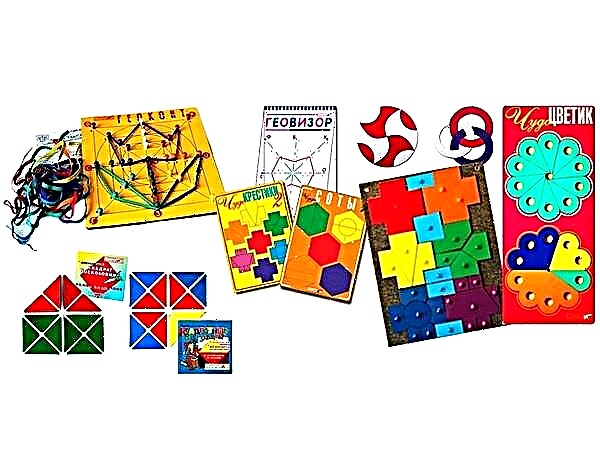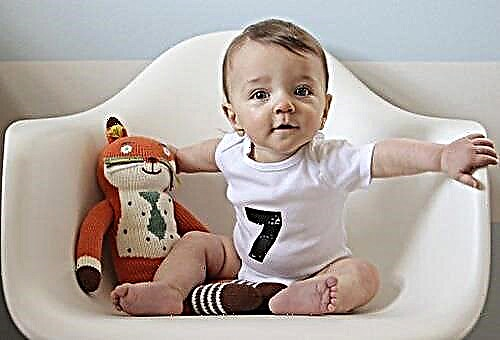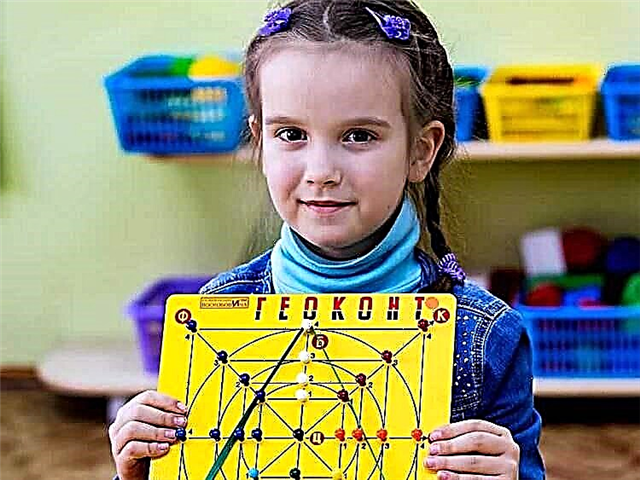Childhood is a wonderful, unforgettable time, a time of new discoveries and adventures. Kids enjoy exploring the vast world in every possible way. The guys happily drip in the sand and earth, stroke animals, touch the surrounding objects.
But sometimes such fun plays a cruel joke with little explorers. Indeed, in the environment there are many pathogens of infectious, fungal skin diseases. The baby's immune system is not yet ready to cope with the abundance of infections. So there is such a disease as microsporia, or ringworm.
It is important for parents to know what microsporia is and how to prevent it. After all, many unpleasant situations may not happen to a baby if moms and dads are vigilant and protect their child. You need to understand what the treatment of skin diseases is aimed at, when you can do with traditional medicine, and when you need to sound the alarm and run to the doctor.
Microsporia or ringworm?

Ringworm is a highly contagious fungal disease of the skin, nails and hair. But it is not entirely correct to call ringworm microsporia, because there are several pathogens of lichen. If fungi of the genus Trichophyton became the cause of the lichen, then the disease is called trichophytosis. When infected with Microsporum fungi, microsporia appears.
Microsporia is most common in children, because the disease is very contagious, and it is transmitted from pets and from sick people. Trichophytosis can be contracted exclusively from a sick person.
The causative agent of microsporia
The culprits for the appearance of fungal skin lesions in children include Microsporum fungi. Scientists have identified more than 12 species of this genus, the most common of which is Microsporum canis.
The fungus is highly resistant in the external environment and can infect others for several years. The pathogen is found in hair, animal hair, dust or skin flakes.
Getting on the skin, the fungus takes root and forms its colonies in the hair follicles. This occurs both on the surface of the head and in the hair follicles of the vellus hair throughout the body. Rarely, microsporia appears on the palms, feet and nails, although there are no hair follicles there.
The most susceptible to the disease are children of preschool and school age. In adults, the disease is much less common, which is associated with the properties of the immune system of adults.

Although microsporia is a highly contagious disease, not all children contract fungi. There are certain risk factors, the combination of which increases the possibility of infection by several times.
Risk factors for the development of fungal skin diseases are as follows.
- The disease is more common in children with chronic diseases, weakened immunity.
- For the development of fungi, sufficient humidity is needed - warm and rainy weather. Therefore, an increase in the incidence of microsporia is observed in spring and summer - in May, June and autumn - in September, October.
- Unfavorable sanitary and hygienic living conditions of the child contribute to the spread of the pathogen.
- Excessive sweating, moisture of the baby's skin is an excellent breeding ground for the fungus.
- Hormonal problems - hypothyroidism and diabetes mellitus.
How does microsporia infection occur?
Microsporia is a contagious disease that is most often spread by sick animals.
Both domestic and wild animals can get sick with a fungal disease. Among domestic animals, microsporia is susceptible to cats, dogs, rabbits, cattle, and among wild animals - foxes, arctic foxes, monkeys.
Microsporia infection does not require direct contact with the animal. It is enough if wool or scales from surrounding objects get on human skin, for example, when caring for or feeding a pet.

Children most often contract the disease through contact with infected cats, kittens, less often - when interacting with dogs or through infected care items.
A person who is sick with microsporia is also dangerous, and he releases the pathogen into the environment. For children, the source of infection is often a sick child, for example, playing in a sandbox or attending a children's group.
Infection from sick family members is possible, through contact with household items, clothes contaminated with the fungus. It is dangerous to use one comb or wear a headgear of a patient with microsporia.
With proper hygiene and careful hand washing, the disease can be prevented. The contact of fungal spores on the surface of human skin does not mean the inevitability of the disease, although the risk of infection remains high.
The incubation period for microsporia in children
The incubation period can vary. It depends on the type of fungus Microsporum, ranging from 5 days to 6 weeks. But most often the development of the disease occurs within 1 - 2 weeks from the moment the fungus enters the skin.
Classification of microsporia in children
From the type of fungus
Depending on the type of fungus Microsporum, epidemiologists distinguish the following types of microsporia.
- Zoonotic microsporia. This type of microsporia is caused by fungi, the main host of which is animals. Infection occurs through contact with an animal or while caring for it.
- Anthroponous microsporia. They become infected with anthroponous microsporia from a sick person. This form is typical for children, children's groups, kindergartens, schools. It is enough to touch things that have hair or scales containing fungal spores, and the disease develops.
- Geophilic microsporia. The causative agent of the disease is the fungus Microsporum, which lives in the soil. A child can become infected by dripping in the ground seeded with fungal spores.
From localization
Depending on the localization, location of the affected area, the following types of ailment are distinguished.
Microsporia of smooth skin
 The first symptom of infection is the appearance of a small round or oval spot on the skin. The affected area has clear boundaries and rises slightly above the rest of the skin. Doctors call this spot a lesion.
The first symptom of infection is the appearance of a small round or oval spot on the skin. The affected area has clear boundaries and rises slightly above the rest of the skin. Doctors call this spot a lesion.
Gradually, the area of the lesion enlarges, the spot becomes larger, dense to the touch. The outer edge of the lesion swells, transforms into a roller, which consists of crusts and bubbles. In the center of the lesion, the inflammation, on the contrary, decreases, the skin becomes pale pink in color and becomes covered with scales.
It happens that the fungus re-enters the ring and infects the skin again. Then, in the middle of the focus, a new rounded spot appears, and then a ring. Re-infections can be repeated, then the shape of the focus resembles a target and consists of several rings, which is very characteristic of anthroponous microsporia.
The foci are located on the upper limbs, neck, face, at the site of the introduction of the pathogen. The diameter of the spots varies from 5 mm to 3 cm, but sometimes the lesions reach 5 cm. Nearby lesions can merge, forming extensive skin lesions.
This infection does not cause severe discomfort in the child and is often painless. There are even abortive forms, when the clinical manifestations of microsporia are not expressed, and the skin remains pale pink, the affected area does not have clear boundaries. Severe pain and itching indicate a serious inflammatory process in the lesion.
For children under 3 years old, the erythematous-edematous form of the disease is characteristic. This form is characterized by the appearance of a red, edematous focus with pronounced signs of inflammation. Peeling and the appearance of scales are not typical for microsporia in children, these manifestations are minimal.
Microsporia of the scalp
If the fungi get on the child's hair, microsporia develops in this area. This localization is typical for children from 5 to 12 years old and rarely occurs in adults. This is explained by the peculiarity of the hair follicles of adults.
With the onset of puberty, the hair follicles produce acid that prevents Microsporum from growing. Therefore, there are cases of spontaneous cure of the disease in children who have reached puberty.
Microsporia disease is very rare in children with red hair, the reasons for this are not yet known.
The defeat of the scalp is manifested by the formation of lesions on the vertex, crown and temples. On the head, you can see spots of a round or oval shape with clear edges.
After the spores of the fungus hit the scalp, a small scaly area forms at the site of the lesion. The hair in this place is surrounded by ring-shaped scales. After a week, it is easy to detect hair damage in this area. Hair loses color and elasticity, breaks easily, leaving only fragments about 5 cm long.
The affected area is an islet, a group of hair fragments covered with a grayish bloom. A large amount of the pathogen is found in plaque and scales located on the scalp.
The number of affected areas of the scalp usually does not exceed two. But between the lesions, small secondary screenings appear, up to 2 cm in diameter.
Microsporia of nails
Damage to areas devoid of hair follicles, nails, palms or feet is very rare. With nail microsporia, a gray speck forms on the baby's nail, which grows and increases in size. Over time, the color of the spot changes to white, and the nail plate loses its properties and collapses.
From the depth of defeat
Depending on the depth of the skin lesion, the following types of pathology are distinguished.
- superficial microsporia;
Skin damage in this form is superficial, mainly the upper layers are damaged. Microsporia is manifested by peeling and redness of the skin. When the fungus spreads to the scalp, hair loss and breakage occurs. Superficial microsporia most often occurs in children with anthroponous infection.
- infiltrative-suppurative microsporia.
With a severe suppurative form of microsporia, the inflammation process penetrates deep into the tissues. Focal fragments, covered with pustules, form on the skin. When pressing on the lesion sites, purulent exudate is released. The patient's state of health with a suppurative form is impaired.
Diagnosis of microsporia in children
To make the correct diagnosis, you need to consult a dermatologist. The specialist examines the affected area of the skin and scalp. Then the doctor conducts a survey and establishes the possibility of contact of the child with a patient with microsporia or an infected animal.

The final diagnosis is established after additional research.
- Dermatoscopy and microscopy. To see the fungus under a microscope, a scraping of the affected skin or hair fragments is taken. When examining skin scales, filaments of mycelium, bodies of fungi are found. A large number of fungal spores are determined on the damaged hair.
- Cultural research. Sowing scales or hair on a nutrient medium will help to more accurately diagnose, prescribe treatment and determine prevention. After 2 - 3 days after sowing, fungal colonies appear in the Petri dish. By the appearance of the colonies, you can determine the type of pathogen and choose a treatment that will accurately affect this type of fungus.
- Luminescent research. With the help of a Wood lamp, you can quickly determine the disease in a child. The affected hair begins to glow green during luminescence examination. A prerequisite for the diagnosis is the cleansing of lesions from ointments and crusts, conducting a study in a dark room.
Thus, only an experienced doctor can accurately determine the cause of the disease, correctly diagnose and prescribe an effective treatment.
Treatment of microsporia in children. General principles
To quickly cure microsporia in a child, it is necessary to start therapy on time and choose the right antifungal treatment. Long-term ineffective treatment or smoothing of the symptoms of the disease with folk remedies leads to suppuration of lesions and frequent relapses of the disease.
How to properly treat microsporia in children can only be determined by a dermatologist.
Therapy of various forms of microsporia has its own characteristics, but the principles of treatment are similar.
- If the fungus affected only the skin, and the vellus hair was intact, then the use of local preparations will be sufficient.
- If the scalp is affected or symptoms of infection are visible on vellus hair, antifungal medications should be taken by mouth.
- Treatment with drugs against fungal infection continues at the same dose for a week after the symptoms of the disease disappear. This measure prevents the recurrence of the disease.
Smooth skin microsporia treatment

Ointments, creams and solutions are widely used for local therapy. The most popular use of ointments containing antifungal drugs. For example, Clotrimazole, Itroconazole, Bifonazole. Antifungal cream - Lamisil, which has a pronounced antifungal effect, is widely used. It is recommended to treat the affected area 2 to 3 times a day.
If the doctor found a pronounced inflammatory process at the site of the lesion, then combined ointments are prescribed. In addition to the antifungal component, such ointments also include hormonal agents that reduce swelling and inflammation, and reduce itching. With a severe suppurative form of the disease, ointments containing antibacterial drugs, for example, Triderm, are often used.
Treatment of microsporia of the scalp
Therapy for this form of the disease should be started when the first symptoms appear in order to prevent the formation of a cosmetic defect on the child's head.
You should shave the hair from the affected area daily and treat the lesion with antifungal ointments or apply a patch with Griseofulvin. Before the end of treatment, the head should be washed 1 - 2 times a week.
Comprehensive treatment of the disease must necessarily include the use of antifungal drugs, most often Griseofulvin is prescribed. The general course of treatment lasts about 1.5 - 2 months.
The duration of treatment for microsporia, the dosage and frequency of administration of drugs are determined by the doctor. Incorrect or prematurely completed treatment often leads to the recurrence of the disease.
Prevention of microsporia in children
- Compliance with personal hygiene. The child should be accustomed to regularly wash his hands, use an individual towel, comb. Explain to your baby that you should not exchange mittens and hats with other children.
- Prevention of contact with an infected animal. Warn your little one that stray animals can carry the disease, do not let the little ones play with them. Examine and treat pets thoroughly.
- Medical examinations in preschool institutions. To prevent the disease in children, it is necessary to identify and isolate patients with microsporia in time. A child with fungal skin lesions should be treated in a hospital, and his belongings must be disinfected.
- Quarantine measures. In a kindergarten or school that a child attends, quarantine is introduced for 2 to 3 weeks.
Conclusion
Microsporia in children is a highly contagious, common disease. You can become infected with the disease both from pets, cats, and from a sick person. Therefore, the main method of protecting a baby from microsporia and fungal infections of the skin is to maintain personal hygiene and prevent contact with the source of the disease.
If the disease has overtaken the crumbs, you must definitely consult a doctor. Improper treatment or delayed treatment leads to spread of the disease and frequent relapses. It is simple to prevent illness, you just need to know the basic rules and be attentive to your child.



